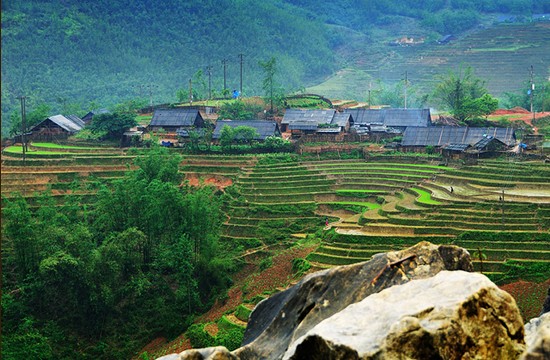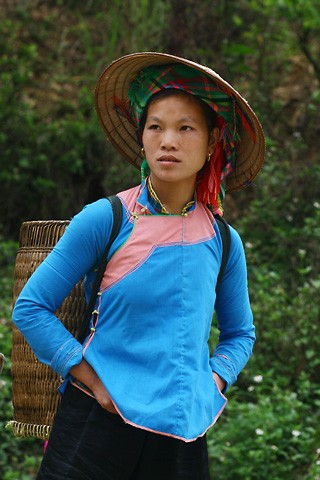Giay ethnic group in Lao Cai
Lan Anh -
(VOVworld) – The Giay ethnic group, which has about 38,000 people, lives mainly in Lao Cai, Ha Giang, Lai Chau, and Cao Bang provinces. They are called by different names such as Dang, Pau Thin, and Xa. Like other minorities of the Tay-Thai group, the Giay grow wet rice and raise domestic animals and fowls.
 |
| Ta Van Giay hamlet in Lao Cao province |
Ta Van Giay hamlet of the Giay in Sa Pa district is located in Muong Hoa valley of the Hoang Lien Range. There are about 140 households built on sloping hillsides beside terraced fields. The Giay build both ground-level and stilt houses.
The center of the ground floor is a solemn place for the ancestral altar and guest room. Senior villager Hoang Muc says: “My house was built before I was born. My father was born in 1910 and he built this house in 1930. I’m his youngest son and I’m allowed to stay in his house. Other houses in the hamlet were built about 30 or 40 years ago. Customarily, the ground floor is 1.8 m high and 9 to 10 m wide. Our house is taller than that of the Mong and we can walk without hitting the ceiling. The house has three rooms with the living-room in the middle.”
 Traditional clothes of the Giay women
Traditional clothes of the Giay women
Unlike Dao and Mong women, who sell brocade products to tourists, the Giay women do house and farm work. They rarely go out of their hamlet in their leisure time. The women make clothes for all the family members. Their costumes are plain with a few embroidery and color pieces at necks and flaps. Luc Thi Ta says: “This is our traditional costume. My grandma told me to make pink clothes for young people and black and indigo clothes for older people. I and my daughters make clothes for the family. In the past we sewed by hand. Now we have a sewing machine.”
Clothes of the Giay in Lao Cai are different from those of Giay women in Lai Chau and Ha Giang. They wear black silk or satin pants with a red upper hem. Their shirts button on the right side. The neck and flaps are hemmed in contrasting colors. The men wear black cotton pants and shirts and indigo headscarves. Hoang Chinh says: “Our traditional clothes are thin, which is cold in winter. We only wear them during traditional events and the New Year holiday.”
The New Year holiday is an opportunity for young Giay people to wear their traditional hand-made clothes and show off their cooking skills. Chinh says: “Our typical dishes are difficult to make. It takes at least half a day to make ‘Khau nhuc”, braised pork or grilled pork. We grill the whole animal at special events such as the New Year holiday and weddings.”
We have some snacks, such as round glutinous rice cakes, popcorn, and puffed rice that the women make every day.
Lan Anh